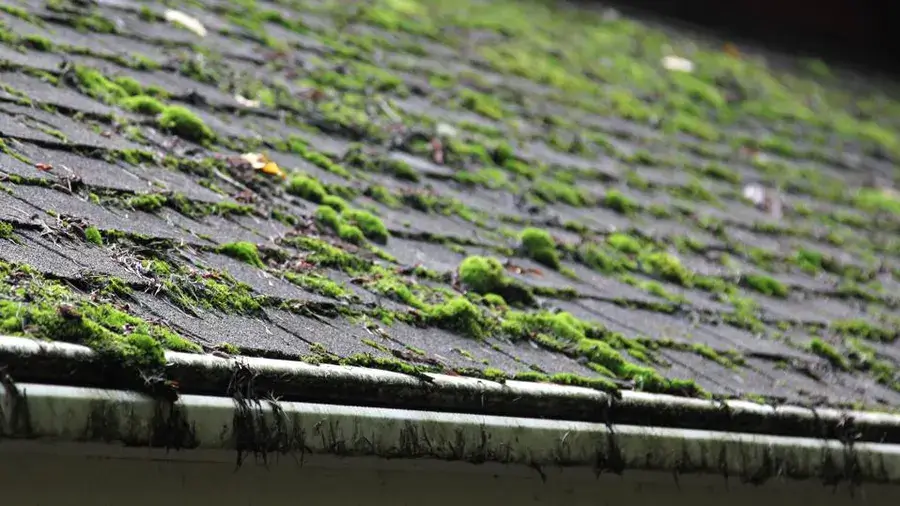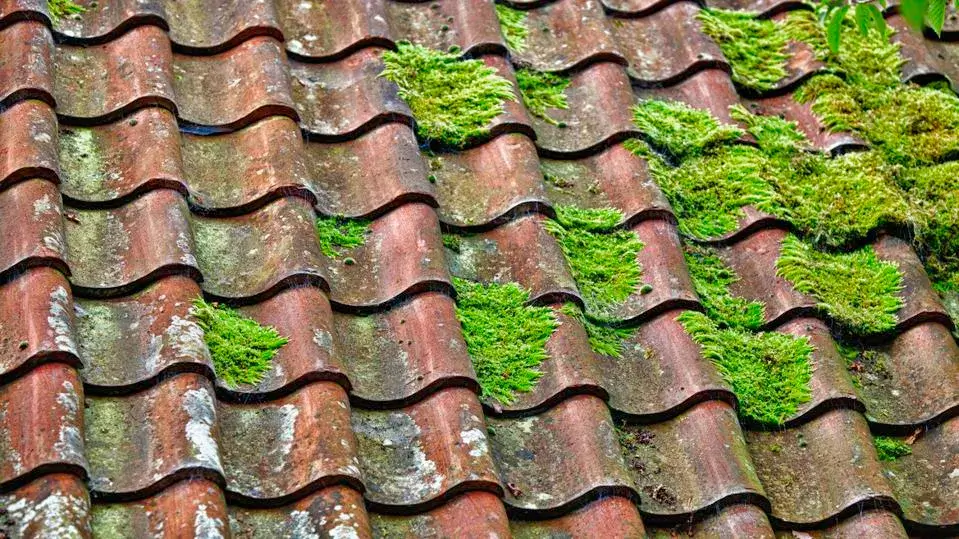
Table of Contents
- How to Know That You Have Moss on Your Roof
- Safety Considerations
- Preparing to Remove Moss From Your Roof
- Instructions
- DIY Moss Removal Vs. Hiring a Professional
- How to Prevent Moss From Growing on Your Roof
Tools
- Ladder
- Garden hose
- Soft, long handled scrub brush (optional)
- Sprayer
- Hammer
Materials
- Trash bag
- Moss removal solution
- Zinc strips (optional)
- Copper strips (optional)
- Roofing nails
While moss on your roof can impart a charming cottagecore aesthetic, it also poses a substantial risk to your shingles and may lead to costly repairs. Preventing roof moss damage is very important and addressing moss growth promptly is the wisest course of action. This is why you might be asking How To Kill And Remove Moss From Your Roof?
Similar to vines encroaching on your home, moss on your roof can result in significant, enduring harm to your property’s surfaces and its underlying structure. If you spot moss on your roof, it’s imperative to take action now.
How to Know That You Have Moss on Your Roof
Moss may not be readily apparent during a cursory ground-level examination of your roof. However, you can conduct a more thorough inspection by employing binoculars or, for a more sophisticated approach, a drone fitted with a camera. Regardless of the method you choose, be sure to thoroughly inspect the entire roof, with particular attention to areas that are typically shaded.
What Does Roof Moss Look Like?

Barrel Tile Roof with Moss Growth
Detecting the presence of moss on your roof is fairly evident. You’ll easily spot green, velvety growth between shingles or on metal roofing surfaces. Occasionally, algae might accompany moss, appearing as black spots on the roof’s surface. Additionally, you may observe lichens, which often manifest as green plaques, with varying degrees of elevation or texture.
Safety Considerations
Engaging in roof work can pose significant risks, so it’s crucial to prioritize safety measures. Ensure you are equipped with protective gear, including sturdy work boots, durable pants, and a hardhat or helmet. Additionally, verify that your safety harness is in excellent condition and securely anchored. Having a companion with you is also vital; they can assist in stabilizing your ladder and be prepared to summon help if any unforeseen incidents occur, further enhancing your safety.
Prep Work For Moss Removal From Your Roof
Preparing to remove moss from your roof isn’t very complicated, you’ll just need to ensure that you’re wearing proper safety gear, that your ladder is in good condition, and that your safety harness is installed correctly according to the manufacturer’s directions.
Instructions
1. Remove All Loose Moss
Using a garden hose with a simple spray attachment, spray water downward along the angle of the roof to dislodge moss. Do not be tempted to spray against the grain of the roof, since this can lift shingles or wedge moss further underneath them. Knock as much of the moss off the roof with the hose as you can. Put any moss you collect into a trash bag for disposal.
WARNING: Do not use a pressure washer, as this can damage shingles. A low pressure chemical wash is recommended.
2. Gently Scrub Remaining Moss
Similar to hosing down the roof, scrubbing it carries the potential to harm your shingles. Without exceptional care, you may inadvertently cause more damage than you intended to prevent, potentially leading to roof leaks. Utilize an extended brush handle, and when scrubbing, start from the top and work your way down, mirroring the approach you used with the hose to prevent shingle lifting. Take your time, working on one section at a time, and keep in mind that achieving perfection may not always be attainable.
Pro Tip:
Never scrub harder than you have to to avoid removing asphalt shingle granules.
3. Apply a Moss Removing Solution
While numerous DIY methods are available, opting for a commercial moss removal solution offers better protection and preservation for both your roof and the plants below. Homemade remedies tend to be harsher on plants, whereas commercial options are gentler. Look for a commercial solution containing ingredients such as potassium salt of fatty acid or zinc sulfate, which are less likely to harm plants while remaining effective at moss removal.
On a cloudy day, prepare the solution by following the instructions on the package, then mix it in your sprayer. Apply the solution to your roof, starting from the top and working your way down. Be cautious not to lift any shingles during the application. If the moss solution requires hosing off afterward, follow the package guidelines accordingly.
4. Install Metal Strips on Your Roof
You can prevent moss growth on your roof by affixing copper or zinc strips, measuring between two to four inches in width, just below the roof’s top ridge on both sides. Use roofing nails for secure installation. These metals have natural moss-deterrent properties, and once permanently in place on the roof, the process of water flowing over them as they oxidize will effectively inhibit moss and algae growth. Apply the metal as a continuous strip, ensuring that sections overlap by at least one inch across the entire affected area’s top.
DIY Moss Removal Vs. Hiring a Professional
While it’s possible to undertake moss removal yourself, it’s important to note that unless you exercise extreme caution and proceed methodically, you run the risk of inadvertently damaging your roof. In many cases, enlisting the services of a professional roofing contractor proves to be a more cost-effective choice, as it can prevent the need for costly repairs caused by the improper cleaning techniques that may wash away the granules on your asphalt shingles.
How to Prevent Moss From Growing on Your Roof
To deter moss growth on your roof, ensure that it receives ample sunlight by trimming back overhanging trees, which can also aid in storm damage prevention. Keep your gutters clear to enhance water drainage from your roof. Additionally, as previously mentioned, consider applying metal strips along the roof’s peak on both sides, as they can gradually discourage moss growth.
